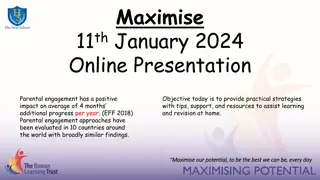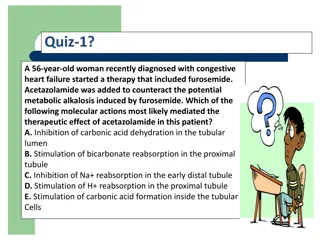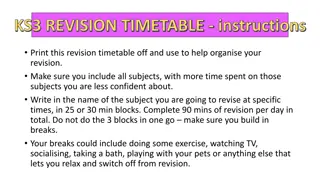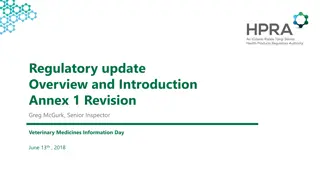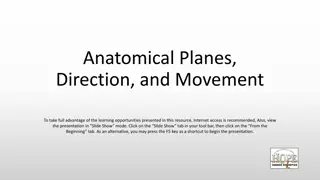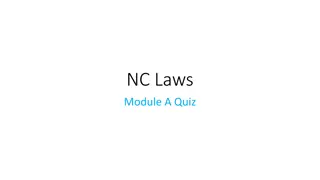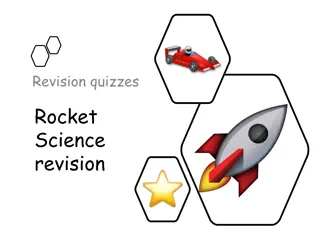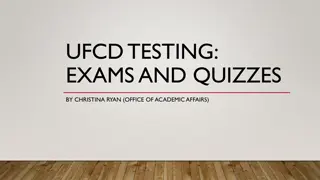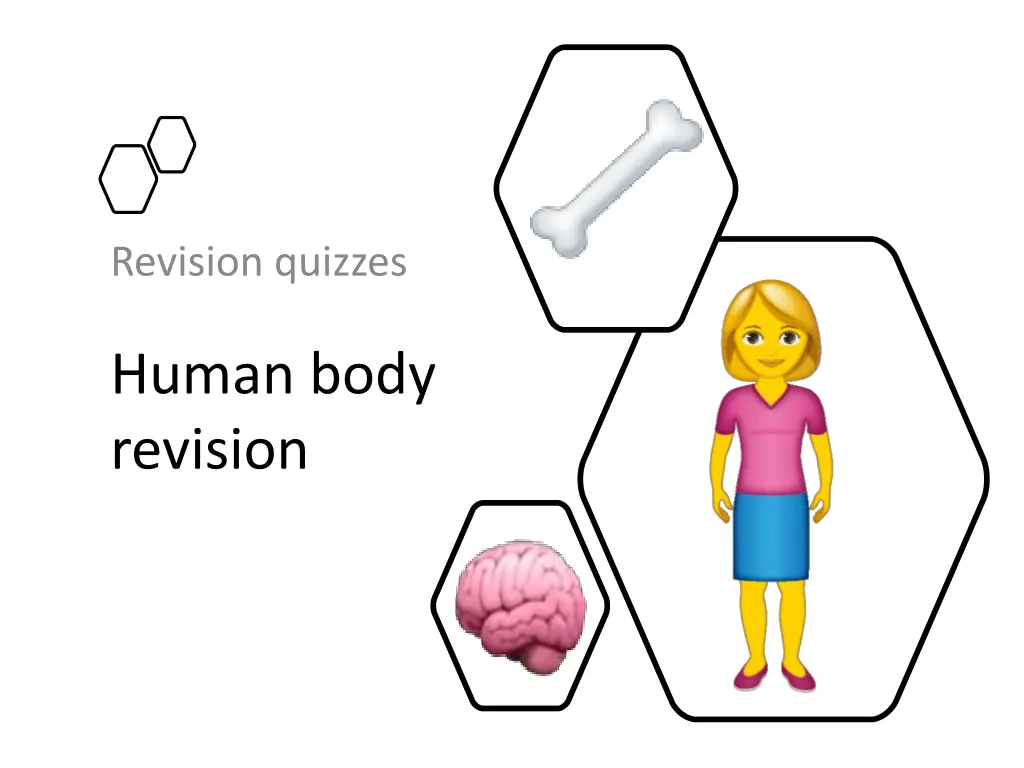
Human Body Revision Quizzes
Prepare for a comprehensive review of the human body with these engaging quizzes covering organ identification, body systems, food groups, digestion, and more. Help an alien understand the human body's organization to avoid being dissected! Includes labeling diagrams, matching exercises, and explanation tasks.
Download Presentation

Please find below an Image/Link to download the presentation.
The content on the website is provided AS IS for your information and personal use only. It may not be sold, licensed, or shared on other websites without obtaining consent from the author. If you encounter any issues during the download, it is possible that the publisher has removed the file from their server.
You are allowed to download the files provided on this website for personal or commercial use, subject to the condition that they are used lawfully. All files are the property of their respective owners.
The content on the website is provided AS IS for your information and personal use only. It may not be sold, licensed, or shared on other websites without obtaining consent from the author.
E N D
Presentation Transcript
Revision quizzes Human body revision
Quiz 1 Identify the organs A B C D F E G H
Quiz 2 1. Name 3 different body systems 2. Beside each body system you have named, list all of the organs in that body system. 3. Arrange the parts of the human body from smallest to largest. Organ system Organelle Organ Tissue Organism Cell Smallest Largest
Quiz 3 An alien has landed and has threatened to dissect lots of humans to gain an understanding of how the human body is organised!!! Your task is to write to him to explain how the human body is organised from a cell up to a whole organism so that he doesn t feel the need to chop us all up!!!! Use the grading sheet to progress as far as you can!. You can use the literacy mats and dictionaries to help with spelling, punctuation and grammar.
Quiz 4 1. Match the food group on the left with the role it plays in the body on the right. 2. Tests can be performed to determine the type of food present in a sample. Copy and complete the sentences below using words from the grid below: a) When glucose is present _____ changes from a blue colour to brick red. b) When the test for protein is positive the reagent changes from blue to ______. c) When starch in present iodine solution turns ___________.
Quiz 5 1. The mechanical breakdown of food starts in the mouth. Label the diagram below to show the four types of teeth found in the human mouth. 2. Write the function of each type of tooth beside each label.
Quiz 6 1. Explain what digestion means? 2. Use notes in your jotter to copy and complete the table below
Quiz 7 1. Copy and complete the sentences below using the word bank provided. Arteries carry _________________ blood ___________ the heart. Blood reaches our cells through capillaries. Here ________ passes from the __________ into the cells. Veins carry _________________ blood _________ the heart. back toblood awayfrom oxygenoxygen richoxygen poor 2. Below is a diagram of the heart. Name the heart chambers labelled A B C & D 3. During exercise the heart beats faster and the pulse increases. Give a reason why this happens.
Quiz 8 1. a) Below is a diagram of the respiratory system. Label parts 1-6 b) Air is made up of many gases. Which gas in humans is: i) Breathed in (inhaled) ii) Breathed out (exhaled) c) The table below shows the composition of air i) Using values from the table, express the percentage of oxygen to carbon dioxide in exhaled air as a ratio in its simplest form. ii) Calculate the percentage of oxygen present in inhaled air.
Quiz 9 Create a mind map in jotter showing unhealthy habits and what effect they have on the body. Make sure to include the body systems and organs they damage and the diseases that they can cause. Impact of Unhealthy Habits
Quiz 10 Thomas was asked to measure and record his breathing rate during different activities. His results are given below. a) How many breaths will Thomas take if he walks for 30 minutes? b) What is the increase in Thomas s breathing rate between sitting and playing football? c) Thomas counted 160 breaths while walking, how long was he walking for? d) Draw a bar graphof Thomas s breathing rate against his different activities.
Quiz 11 The table below gives the breathing rate of a group of pupils. a) What is the average breathing rate for the group? b) How many times higher is the breathing rate of Megan compared to that of Scott? c) Over the period of the measurements Fiona was calculated to have breathed 75 times. How long was the measurement made for? d) How many breaths would Scott take in 1 hour and a half? d) Draw a bar graph of the pupils and their breathing rate
Quiz 12 The pie chart above shows pupils exercise habits in class as a percentage a) b) 25% of pupils exercise how many times a week? c) There are 30 pupils in class and 10% of these do not exercise, how many pupils don t exercise? d) Of the 30 pupils in the class how many pupils exercise twice or more in a week? What percentage of pupils exercise everyday?
Quiz 13 A sports injury clinic recorded the number of different tissue injuries treated in one month. The results are shown below. a) b) What is the total number of muscle and tendon injuries treated? c) What was percentage compared with total injuries of tendon injuries? Which injury was the most common?
Quiz 14 a) What happens to the average cholesterol level in the blood as age increases? What does the chart tells us about the average cholesterol level in the blood of males compared to females? What were the average cholesterol levels for males and females aged between 20-29? Predict the average cholesterol level in the blood of a female aged 50-59 years, if the males in this age group had an average concentration of 6.8 mmol/l. b) c) d)
Quiz 15 a) What was the time taken for his pulse rate to return to normal after the exercise had stopped? b) How long did this person exercise for? c) How much did the heart rate rise after exercising


